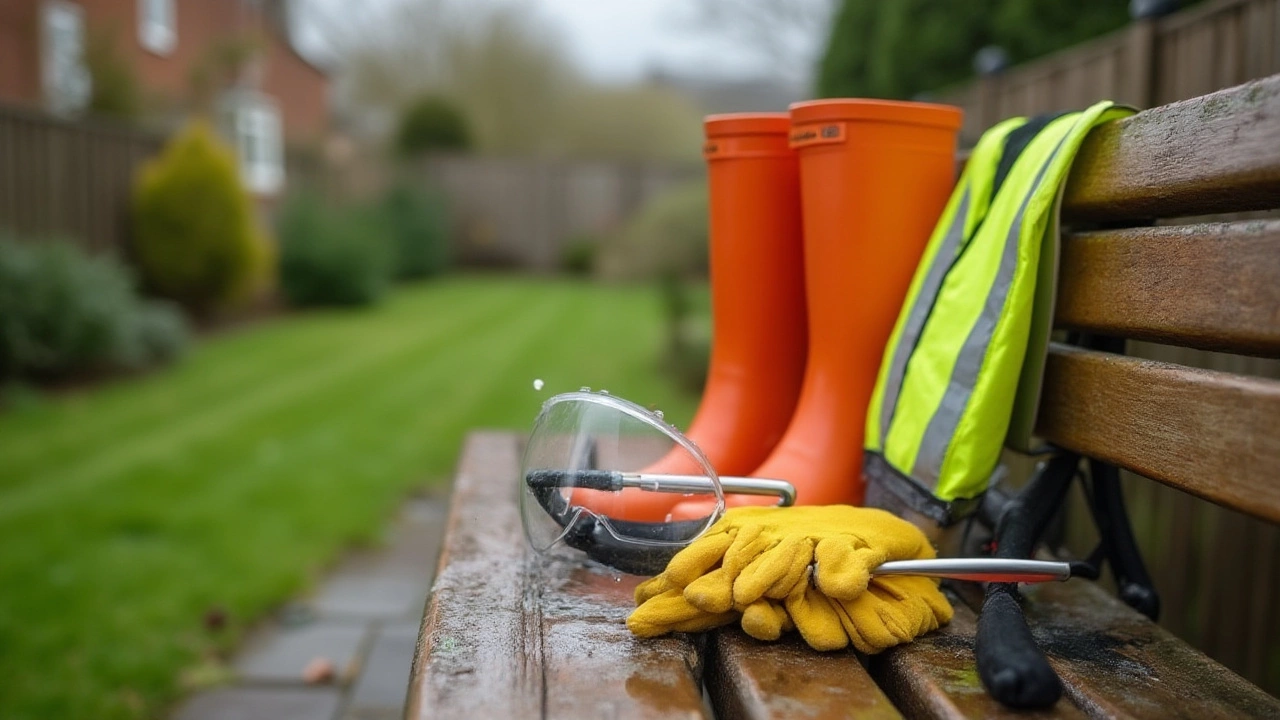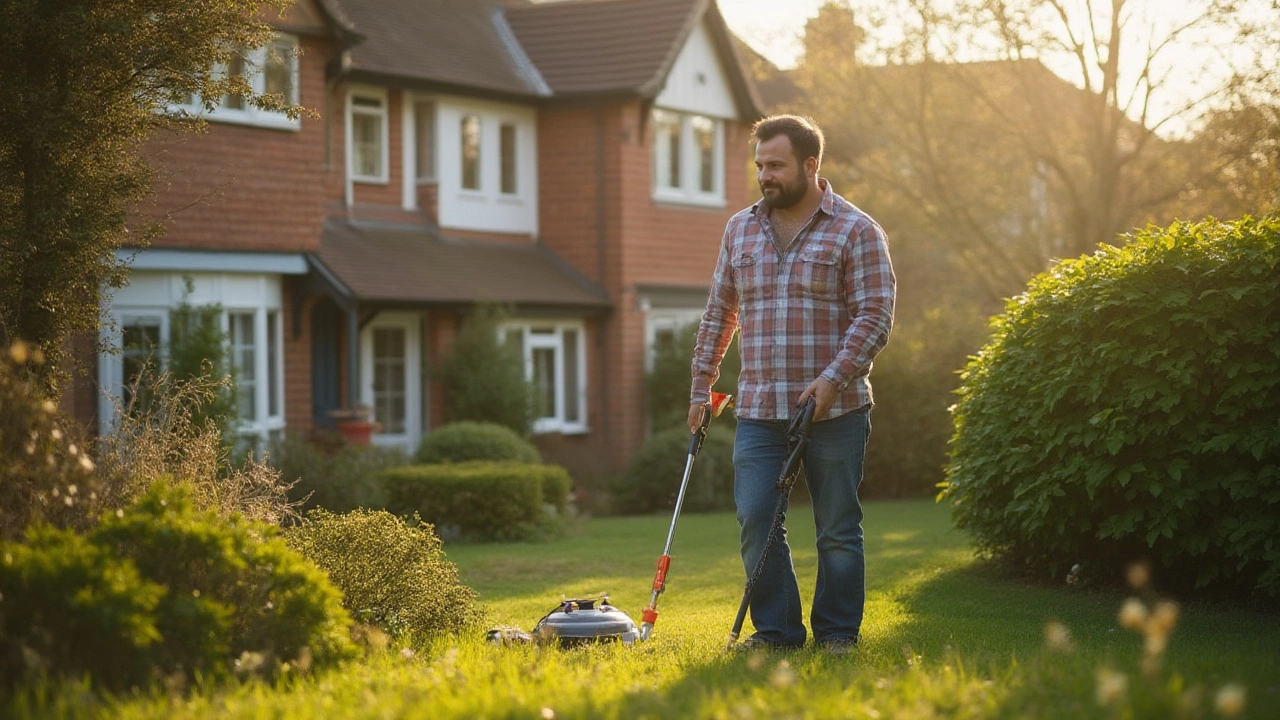Ever looked at your house and seriously wondered if someone swapped it with a department store display on dust and algae? You’re not alone. The urge to blast years off your siding using a pressure washer is real—especially after you see the neighbor’s white house gleaming in the sun, while yours looks like it’s been through a slow-motion food fight. But can you really pressure wash your house yourself, and should you? Let’s get beyond the videos where everything seems so easy and talk about what goes right, what facepalms people hit, and how you can actually do this without wrecking your siding or growing a second nose from the mold.
Is DIY Pressure Washing Worth It?
Let’s talk about the real question behind it all: will saving a few bucks by doing it yourself cost you double later? Pressure washers aren’t mysterious tech—at their core, they’re just really intense water guns. Hardware stores rent (and sell) them by the thousands. According to the Outdoor Power Equipment Institute, more than 25 million pressure washers have been sold in the US since 2020, so there’s no shortage of people taking this chore into their own hands.
The payoff? You can knock years of dirt, algae, and spiderwebs off your house in a single afternoon. That satisfying feeling watching grime melt away is borderline addictive. Some pros say a clean exterior can boost curb appeal and even slightly nudge up home value if you’re thinking about selling.
Still, there’s a difference between ‘pretty clean’ and ‘catastrophe’. High-powered units easily strip paint, dent siding, or even send water behind walls if you’re not careful. And certain materials—like older wood siding or aging bricks—hate to be blasted with high pressure. More than one Reddit user has shared horror stories of finding water leaks in their living room days after washing the outside.
For smaller homes with vinyl or fiber-cement siding, and if your house doesn’t have lead paint or tons of sketchy caulk, DIY makes sense. But if you’ve got a historic house or jungle-like algae, you might want to consider splitting the job: wash what you can reach safely and leave the trickier spots to a pro.
The Right Pressure Washer, Nozzle, and Soap
A lot of people think ‘more power, more clean.’ That’s the fastest way to regret. Most residential pressure washers output between 1,300 and 2,800 PSI (pounds per square inch), and anything over that can peel off paint you didn’t want to lose. For siding, stick to the lower end—1,500 to 2,400 PSI is ideal. If you plan to rent, ask for a unit meant for houses, not driveways.
Nozzle choice makes or breaks your job. Most consumer machines come with color-coded tips:
- Red (0°): Like a knife—don’t use on siding. It’ll carve it up.
- Yellow (15°): For tough stuff like concrete, not for your house.
- Green (25°): General purpose. Good for siding.
- White (40°): Gentle, ideal for rinsing or delicate surfaces.
- Black (65°): Soaping only, almost no pressure.
Go gentle at first. Test a small spot out of sight and watch what happens. If you see paint specs shooting off, swap for a wider angle.
Soap helps more than most people think. The right solution will break down algae and mildew so you don’t need to use brute force. Don’t just grab any old cleaner though—house-washing soaps are made to be safe for plants and siding. Something labeled ‘mildew killer’ or ‘siding cleaner’ should do the trick. Bonus tip: soak plants with water before and after spraying your house to keep them happy.
Here’s a helpful comparison of typical exterior surfaces, paired with suggested PSI and nozzle types:
| Surface | Recommended PSI | Nozzle Angle |
|---|---|---|
| Vinyl Siding | 1,500–2,000 | 25°–40° |
| Wood (Painted/Sealed) | 1,200–1,500 | 40° |
| Brick | 1,500–2,500 | 25°–40° |
| Stucco | 1,200–1,800 | 40° |
If you ignore all the nozzle advice and use a narrow tip at close range, even treated lumber can turn feathery or mushy. Nobody wants to sand down siding because of a pressure washer mistake.

Steps, Safety, and the Most Common DIY Fails
Pressure washing isn’t dangerous if you play it smart—and take your time. But some slip-ups can cost you. Here are step-by-step basics, plus where people most often trip up:
- Plan your attack. Walk around your house. Move outdoor furniture, kid toys, or fragile decorations. Cover electrical outlets and tape up doorways and vents. If you have exterior lights, seal them off with plastic and painter’s tape.
- Check the weather. Pick a dry day. Wind can blow suds everywhere, and rain just waters down your cleaner.
- Protect yourself. Wear eye protection—water needles hurt if they bounce back. Gloves are good too, especially if you’re using cleaner.
- Mix your soap and prep the machine. Use only cleaners approved for pressure washers. Some units come with built-in soap tanks. If not, you may need a separate foam cannon attachment.
- Test a small area. Keep the nozzle around two feet from the siding, and see how it goes. Slowly move closer, but never closer than 12–18 inches. Watch for paint chips or damage.
- Divide and conquer. Start at the bottom and work up with soap, then rinse from the top down. This keeps dirty suds from drying into streaks on clean spots.
- Rinse, rinse, rinse. Leftover soap attracts dirt the next time it rains.
- Check your work. After everything’s dry, inspect for missed spots or surprises, like loosened paint or water behind trim.
DIY fails to watch for:
- Forgetting windows or doors: It’s easy to flood them, especially if seals are old or missing.
- Too much pressure on old wood: This leads to splinters, gouges, or taking off your paint job.
- Wrong angle: Spraying up instead of down can force water into the siding, causing water damage.
- Power washing from a ladder: Never do this solo. The recoil can knock you off balance fast. If you can’t reach, use extension wands or call in a pro for the high stuff.
- Ignoring plant life: Powerful suds or overspray may brown up your garden or flower beds. Water before and after to help dilute soap exposure.
There are about 6,000 pressure-washer-related injuries every year in the US, according to the Consumer Product Safety Commission. Most of these come from people underestimating just how hard that jet hits skin, or losing their footing when the force kicks back.
How to Know When to Call a Pro (Or Not)
Handyman forums are full of folks who tried to save a few bucks, then had to pay double to repair what went wrong—peeling paint, dented aluminum, or, worst of all, finding water stains inside once the walls dry out. Not every job is DIY-friendly, and there’s no shame in passing the torch sometimes.
Call in the pros if:
- Your siding is more than 20 years old, or has lead-based paint risks.
- You spot cracks, gaps, or loose sections—pressure washing can make damage worse.
- The house has a lot of multi-story peaks. Working at height with a pressure washer is dangerous.
- The exterior is mostly brick or stucco, which can crumble under too much force if aging or poorly maintained.
- Mold or algae is so widespread that standard washing doesn’t cut it. Pros have commercial-grade soaps and soft-wash equipment that kills spores, not just blasts them into the neighbor’s yard.
DIY pressure washing makes the most sense if your house is mid-sized, has modern siding, and is safe to access. You’ll need to budget a day (or more, depending on stubborn stains), the cost to rent a washer (usually $50-$100/day), cleaning solutions (about $20), and possibly a few protective extras for outlets and plants.
If you really want to save, consider splitting the job: do ground-level walls yourself and hire a pro for the trickier upper levels. And if you’re set on doing the whole thing, take the time to do it right—nothing ruins a sunny afternoon faster than a surprise leak or a cracked window.
To sum it up: yes, you can pressure wash house exteriors yourself, but only if you’re careful and well-prepared. Take a few walls at a time, and don’t be afraid to stop if something feels off. The most satisfying part isn’t just seeing the muck come off—it’s finishing the job knowing you didn’t swap dirt for chaos. Your future self (and your house) will thank you.
